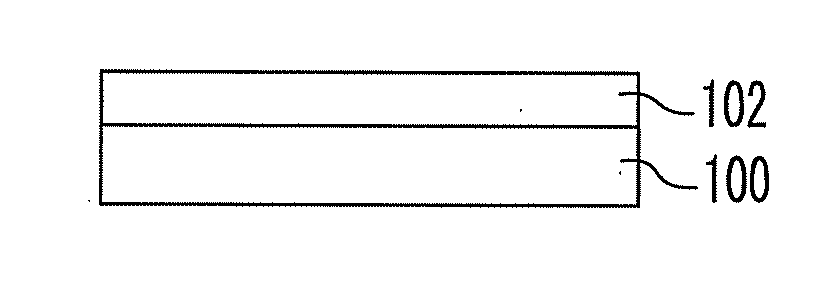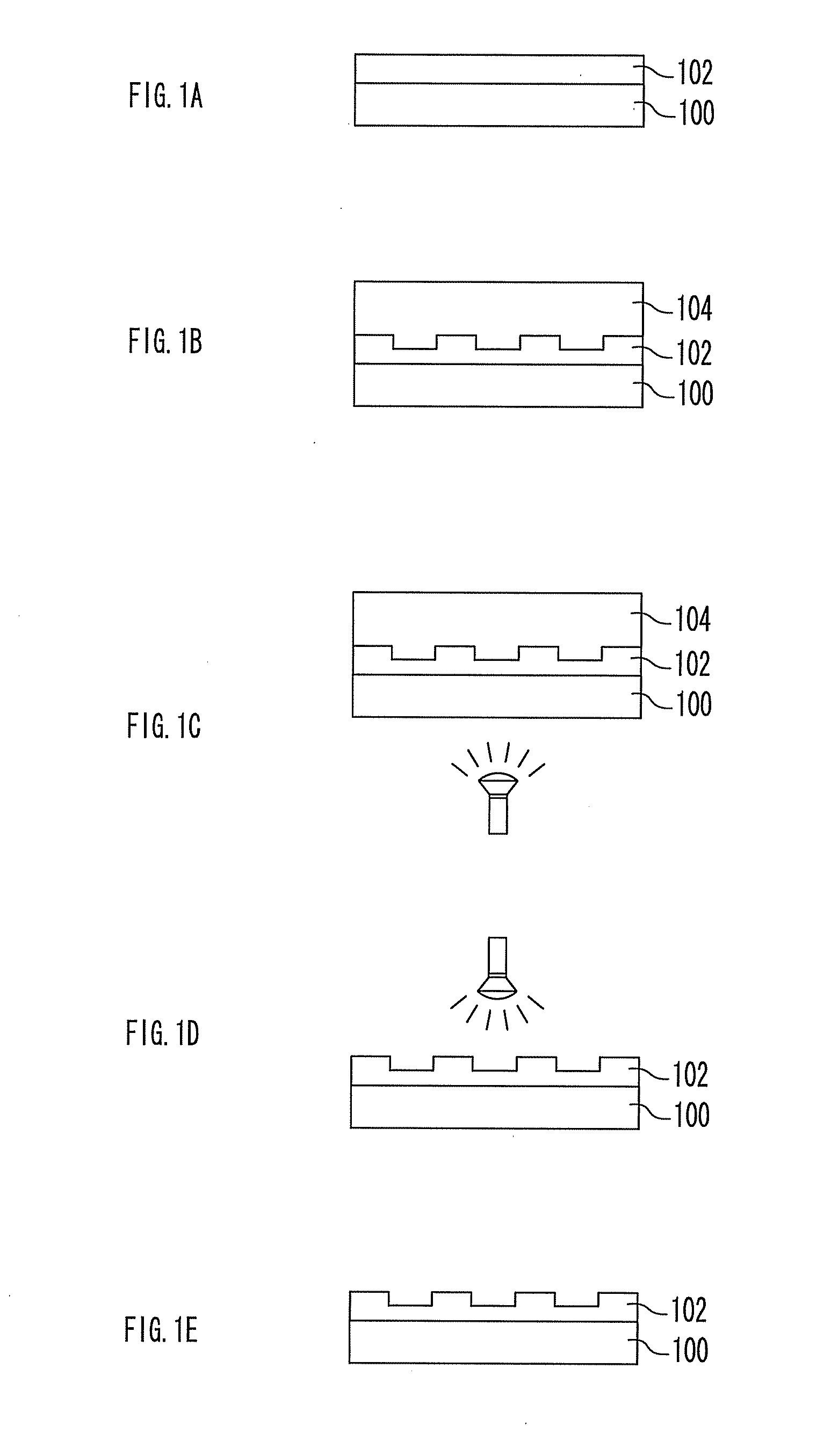Method of manufacturing a replica mold and a replica mold
a manufacturing method and mold technology, applied in the field of replica molds and replica molds, can solve the problems of high cost of obtained molds and complicated manufacturing process, and achieve the effects of simple manufacturing, low cost and short time period
- Summary
- Abstract
- Description
- Claims
- Application Information
AI Technical Summary
Benefits of technology
Problems solved by technology
Method used
Image
Examples
reference example 1
Synthesis of a Polysilane
[0086]Four hundred ml of toluene and 13.3 g of sodium were charged in a 1000-ml flask equipped with a stirrer. The temperature of the contents of this flask was raised to 111° C. and stirred at high speed in a yellow room which shielded ultraviolet rays, thereby finely dispersing sodium in toluene. Phenylmethyldichlorosilane 42.1 g and 4.1 g of tetrachlorosilane were added thereto, followed by stirring for 3 hours for polymerization. Then, ethanol was added to the reaction mixture obtained to deactivate excessive sodium. The resultant was washed with water, and then the separated organic layer was put in ethanol to thereby precipitate a polysilane. By re-precipitating the obtained crude polysilane 3 times in ethanol, a branched polymethylphenylsilane having weight average molecular weight of 11,600 and including 10% of oligomer was obtained.
reference example 2
Synthesis of Fluorine-Containing Polysilane
[0087]The procedure was carried out in the same manner as in Reference Example 1 except that 25.8 g of phenylmethyldichlorosilane and 28.5 g of methyltrifluoropropyldichlorosilane were used in place of phenylmethyldichlorosilane, to thereby give phenylmethyl / methyltrifluoropropyl (1 / 1) copolysilane having a weight average molecular weight of 10,000 and including 10% of oligomer.
reference example 3
Preparation of a Replica Mold Material
[0088]The polymethylphenylsilane (PMPS) obtained in Reference Example 1, phenylmethyl / methyltrifluoropropyl (1 / 1) copolysilane (PMTFPCPS) obtained in Reference Example 2, vinyl group-containing phenylmethylsilicone resin (tradename “KR-2020”, Mw=2,900, iodine value=61), methoxy group-containing phenylmethyl silicone resin not containing a double bond (tradename “DC-3074”, manufactured by Dow Corning Corporation), and an organic peroxide BTTB (manufactured by Nippon Oil & Fats Co., Ltd., 20% by weight of solid content) were mixed in proportions shown in Table 2. The resultant mixture was dissolved in methoxybenzene (tradename “anisole S”, manufactured by KYOWA HAKKO KOGYO Co., Ltd.) in such a manner that the solid content was 77% by weight, to thereby prepare replica mold materials Nos. 1 to 7. In the replica mold material No. 7, zirconia oxide nanoparticle dispersion (manufactured by Sumitomo Osaka Cement, Inc., tradename “NZD-8J61”, 16% of soli...
PUM
| Property | Measurement | Unit |
|---|---|---|
| pressure | aaaaa | aaaaa |
| sizes | aaaaa | aaaaa |
| light transmittance | aaaaa | aaaaa |
Abstract
Description
Claims
Application Information
 Login to View More
Login to View More - R&D
- Intellectual Property
- Life Sciences
- Materials
- Tech Scout
- Unparalleled Data Quality
- Higher Quality Content
- 60% Fewer Hallucinations
Browse by: Latest US Patents, China's latest patents, Technical Efficacy Thesaurus, Application Domain, Technology Topic, Popular Technical Reports.
© 2025 PatSnap. All rights reserved.Legal|Privacy policy|Modern Slavery Act Transparency Statement|Sitemap|About US| Contact US: help@patsnap.com



